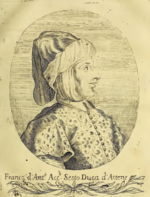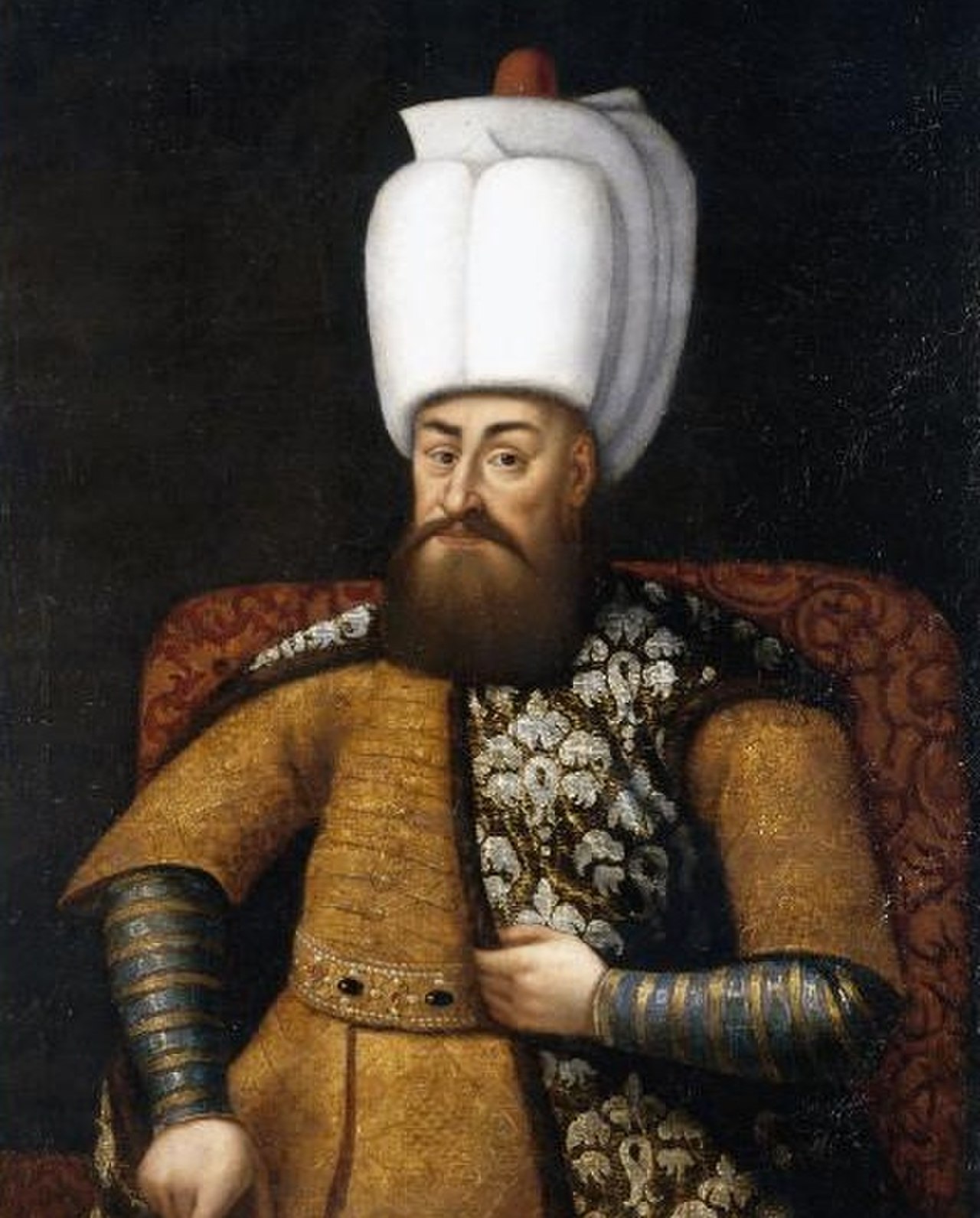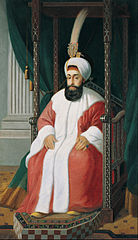 |
Mehmed II the Conqueror Ottoman Sultan |
Sultan of the Ottoman Empire
Also known as:
Mehmed the Conqueror.
 |
| Mehmet II Ottoman Sultan |
His lovers were:
 |
Radu III of Wallachia |
1) Radu III of Wallachia (1435-1475).
Son of: Vlad Dracul II, Voivode of Wallachia, & Cneajna of Moldavia.
Husband of: Maria Despina, Serb or Albanian Princess.
" . . . Before leaving Romania, he appointed Mihaloglu Ali Bey governor of Wallachia with instructions to install Vlad's brother Radu as ruler, under the sovereignty of the Porte. In sharp contrast to his brutal and ungainly brother, Radu was a weakling and a voluptuary, famous for his beauty. He had spent years as hostage at the sultan's court, where he had won Mehmed's special favor. Chalcocondylas describes at length an incident which allegedly took place between them. The story is that Mehmed, whose passion for the boy is reliably attested, attempted to take liberties with him, whereupon Radu drew his sword and wounded the importunate lover. For fear of the sultan's vengeance, Radu climbed a nearby tree. In the end, however, he showed himself more amenable to the sultan's attentions and was taken back into favor. He even managed to remain in Mehmed's good graces and accompanied him to Wallachia where certain local nobles had chosen him as successor to the throne." (Mehmed the Conqueror and His Time: 207)
 |
| Francesco II Acciaioli Duke of Athens |
2) Francesco II Acciaioli (d.1460)
Duke of Athens 1455-1456.
a.k.a. Franco.
Son of: Antonio II Acciaioli, Duke of Athens, & Maria Zorzi a.k.a. Chiara Zorzi.
Wife of: Maria Asanina.
"...They complained to Mahomet, who cited Contarini and his stepson to appear before his court, where a dangerous rival awaited them in the person of the former Duke Antonio II's only son Franco, a special favourite of the Sultan." (The Cambridge Medieval History, Vols 1-5)
"The Aragonese attempted to reclaim the Duchy, calling Tommaso Beraldo the Duke. However, he failed to dislodge Antonio who left the Duchy to his nephews Nerio II 1435-39 & 1441-51 & Antonio II (1439-45). Although named by Antonio I as heir Nerio II (helped by the Ottoman Sultan Murad II) had initially to fight Antonio’s widow (who was helped by Constantine Palaeologus, Despot of Morea & later the last Emperor of Byzantine Constantinople as Constantine XI). Nerio II was thrown out of Athens by his plotting brother, Antonio II, but returned on his death (1441). He was thrown out by Antonio’s widow, Maria Zorzi. Nerio fought for Constantine XI against the Ottoman Turks, but soon came to terms with Murad. Nerio left the Duchy to his son Francesco I (1451-. The regency was in his mother, Chiara Zorzi’s hands but she remarried to the Venetian Bartolomeo Contarini and the new Sultan Mehmet II was asked by the Athenians to intervene. The young Duke remained at the Sultan’s court. A son of Antonio II, Francesco II (Franco) was placed by Mehmet II on the ducal throne in 1455, but the Duchy was annexed by the Sultan 1456/8. He repudently (sic) became one of Mehmet’s lovers. He started a plot to retake the throne of Athens, so Mehmet had him killed." (Chaletaria, 2006, August 15)
3) Hass Musrat Pasha
Son of: Thomas Palaiologos, Despot of Morea, & Caterina Zaccaria of Achaea.
"Some of the younger males of the Byzantine aristocracy survived the siege and were taken by Mehmet into his household. Kristoboulos writes that Mehmet 'appointed some of the youths of high family, whom he had chosen according to their merits, to be in his bodyguard and to be constantly near him, and others to other service as his pages.' These captives included two sons of Thomas Palaeologus, brother of the late emperor Constantine XI, who came to be known as Hass Murat Pasha and Mesih Pasha. Hass Murat was a particular favourite of Mehmet, probably his lover,and eventually was appointed berleybey of Rumelia. Mesih also rose to high rank in Mehmet's service,and during the reign of the Conqueror's son and successor Beyazit II he thrice served as grand vezir. . . ." (Children of Achilles: 166)
" . . . The case of three Palaiologan princes, Mesih Pasa, his brother Has Murad Pasa and a third, unknown boy, all sons of Thomas Palailogos, the elder brother of the last emperor, Constantine XI, who were raised as pages in the seraglio of the conqueror Sultan Mehmed II is a case of early paidomazoma." (Children of Achilles: 166)
"Although Constantinople was conquered, and Basileus Constantine XI Palaiologos killed, on 29 May 1453, Byzantine governance limped on until May 1460 in the Despotate of Morea (southern Greece) under the emperor's brother Thomas Palaiologos, and until August 1461 as the Autocracy of Trebizond (northern Turkey) under the pretender David Komnenos. However, as they were not crowned by the patriarch in Constantinople, neither man was legally considered Basileus. Komnenos and his children were executed by the Ottomans, while Thomas Palailologos and his four children fled into exile as hangers-on in Pope Pius II's retinue. Upon Thomas Palailologos' death, his eldest daughter, Helena, was married off to the Despot of Serbia, George Brankovic -- her daughters all died childless as nuns. Thomas' youngest son, Manuel, abnegated his claim to an imperial title, surrendering all claims to the throne on behalf of him and his children to the Ottoman Sultan in exchange for a pension and a house in Constantinople -- his own children either converted to Islam or were enslaved into the Sultan's harem. Thomas' youngest daughter, Sophia, was married off by the pope to Ivan III in Moscow in a vain hope of a joint Catholic-Orthodox crusade to liberate Constantinople, and passed her own semi-regal imperial status to the emerging Russians -- who spent the next four centuries flirting with the idea of invading Turkey and resurrecting the Byzantine Empire. Finally, Thomas' eldest son, Andreas, bankrupt in Rome, twice sold his Latinised title Imperator Constantinopolitanus to the invading Charles VIII of France and John II of Aragon (father of Ferdinand II, who unified Spain by marrying Isabella of Castile, who in turn were grandparents of Charles V). Andreas' only son, Constantine Palaiologos, the last male heir of the Roman Imperial line traceable back to Julius Caesar, died in 1508 as a common soldier in Rome -- a fitting end to fifteen centuries of Roman Imperators. Donald Nicol and John Julius Norwich both trace claimed offshoots of Thomas Palailologos' (apparently) illegitimate son John, who fled to London and whose descendants were recorded in 1636 in Cornwall and 1679 in Barbados. Norwich identifies the last official claimant to the Roman imperial office as Godscall Palaeologus, a woman who disappeared from historical records in London in 1693. . . ." (Mapping European Empire: Tabulae Imperii Europaei: 66)
 |
| Murad III of Ottoman Empire @Wikipedia |
(1546-1595)
Ottoman Sultan
1574-1595
"When Selim died in 1574, Murad (III) began his twenty-one-year reign at the age of twenty-eight. Like his father, Murad had only a single concubine during his princedom (or at least reproduced only with one woman), and publicly honored only his eldest son by that concubine. But unlike his father, he continued his monogamous relationship with his haseki several years into his sultanate. Murad's favorite was Safiye, a concubine said to be of Albanian origin, from the village of Rezi in the Ducagini mountains. It was with great difficulty that Murad was persuaded by his mother Nurbanu to take other concubines. Finally he accepted as a gift from his sister Ismihan, wife of the grand vezir Sokollu Mehmed Pasha, two beautiful slave women, each skilled at dance and musical performance. Murad's reluctance to take concubines may have been due to the impotence he suffered during this period of his life: Ottoman histories openly describe his inability to perform secually with the concubines offered to him. Once cured, however, Murad commenced his legendary preoccupation with a record number of consorts: at his death he left twenty sons and twenty-seven daughters." (The Imperial Harem: Women and Sovereignty in the Ottoman Empire: 94)
 |
| Abdülhamid I @Wikipedia |
(1725-1789)
Ottoman Sultan
1774-1789
Also known as:
Abdulhamid I
Abd Al-Hamid I
Son of: Ottoman Sultan Ahmed III & Rabia Sermi Sultan.
His lover was:
 |
| Aimée du Buc de Rivéry @Wikipedia |
Aimée du Buc de Rivéry (1768-?)
Also known as:
Aimee Dubucq de Rivery
Aimee de Rivery.
Nakshedil Sultana
Nakshidil
Naksidil Sultan.
" . . . It is believed that the Ottoman Sultan Abdul Hamid I received a beautiful blonde French girl, captured by Algerian pirates on the high seas between France and Martinique where her parents lived, as a slave. Her name was Aimee Dubucq de Rivery and her closest friend was her cousin, Josephine, also from Martinique. The pirates had taken her to Algiers where the Bey took immaculate care of her in order to prepare her as a bewitching gift for the Sultan, his nominal master. The gift was to be well received but Aimee must have had some difficulty in transferring from a French convent in Normandy to the Sultan's harem where the girls spent much of the day, writes Lesley Blanch, 'lolling in Turkish baths, naked and sleek, ladling perfumed water over each other, twisting pearls and peacock feathers in their thin long hair, nibbling sugary comfits, gossiping, idling away the hours, becalmed in the dreamy, steamy, limbo-land...'. However, she was soon taken to the Sultan's bed and, a year later in 1783, gave birth to a son, Mahmoud. From that moment she became Abdul Hamid's favorite and her influence in the court increased by the day. The Sultan was so delighted that he gave a festival for which a kiosk was spun sugar was built in the grounds of the seraglio. In the Sultan's death Aimee was to wield immense influence on his nephew and heir Selim, who was soon to adopt liberal French ideas under her supervision. It seems most likely that she also became Selim's mistress." (Egypt's Bell Epoque: 16-17)
"Aimee de Rivery born in 1763 in (sic) the island of Martinique, was the daughter of a very noble family and the cousin to Josephine Bonaparte, Napoleon's wife. As they were being raised together in their childhood a fortune-teller came up one day saying to the two girls 'You, Josephine! you are going to be the Queen of France in the future, and you, little Aimee you are going to be the Queen of a country in the east in the future.' They wondered if that would come true. In 1784, on her return to Martinique, after attending convent school in France, Aimee was kidnapped by Algerian pirates. Twenty-one years old, Aimee was sold to the Dey of Algiers. Captivated by her beauty the Dey saw an opportunity to win the Sultan's favour. He presented the girl to Abdulhamid I. She was fair, demure and intelligent. The Sultan named her Naksidil (Embroidered of the Heart), converted her to Islam and made her his favourite as odalisques." (Explore Turkey)
"Aimee du Buc de Rivery, a cousin of Josephine, Napoleon's first wife from Martinique, is the second French woman with royal connections who is rumored to have entered the harem and become the mother of a sultan. Supposedly, Aimee was captured by corsairs from Algiers and later presented as tribute to Abdul-Hamid I (f. 1774-1789) by the Dey of Algiers. Under the name Nakshidil, she then became the mother of Hamid II. This identification is impossible because documents show Aimee was still in France in 1788, after Mahmud was born. Some versions of this legend tackle this issue by making her the foster mother of Mahmud while others ignore it altogether. Evidence that Mahmud's mother was French is found in a letter written by the mother-on-law of the French ambassador to the Ottoman Empire at the time of Nakshidil's death in 1817. . . ." (Journal of World History)
 |
| Selim III Ottoman Sultan @Wikipedia |
(1761-1808)
28th Ottoman Sultan
1789-1807
Son of: Ottoman Sultan Mustafa III & Mihrisah Sultan
Husband of:
1. Safizar Kadın (d.1792)
2. Aynısafa Kadın
3. Zibifer Kadın (d.1817)
4. Tabısafa Kadın (d.1855)
5. Refet Kadın (d.1867)
6. Nurușems Kadın (d.1826)
7. Hüsnümah Kadın (d.1814)
"The treacherous Hangerli was meanwhile denouncing Hussein to the sultan as responsible for the disaster before Vidin; but he was not sufficiently versed in the secret scandal of Stambul (sic) to realise that Hussein's wife was the mistress of Selim III, and so this intervention brought disaster upon his head. An emissary was sent from the Porte to Bucharest, accompanied by a tall negro executioner. Forcing his way into the palace and into the very presence of the hospodar, he produced a firman of the sultan and ordered t e negro to strangle the wretched Hangerli then and there, before the eyes of his terrified guards (1 March 1799(. When some of the boiars rushed in, they found that the prince's head had already been hacked off, and the room was deluged with blood. His naked body was then thrown out into the street and left there till evening. An admirable picture of Turkish culture in the dying century." (A History of the Roumanians: 159)
No comments:
Post a Comment